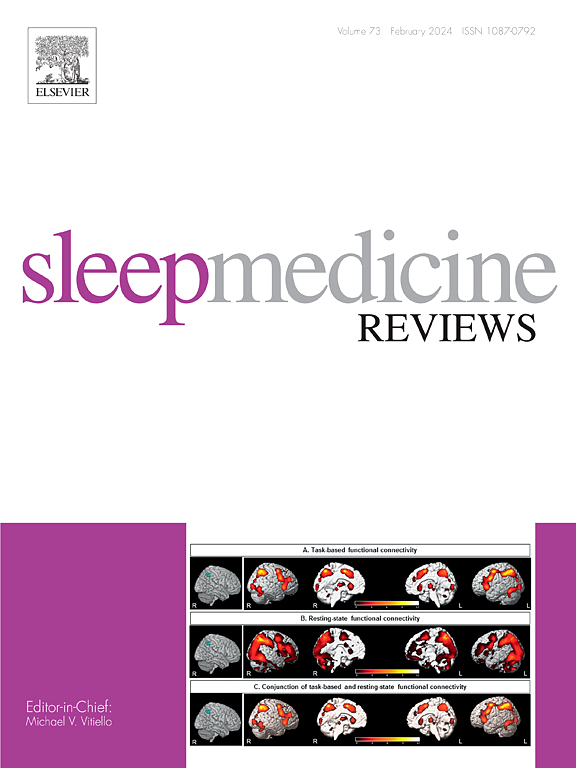Central disorders of hypersomnolence – A narrative review on current and potential biomarkers
IF 9.7
1区 医学
Q1 CLINICAL NEUROLOGY
引用次数: 0
Abstract
Central disorders of hypersomnolence are currently diagnosed in clinical practice from overnight polysomnography and multiple sleep latency test (MSLT). Cerebrospinal fluid (CSF) orexin levels are also a useful confirmatory test for type 1 narcolepsy. The diagnosis and differentiation of disorders of hypersomnolence remain limited by the lack of repeatability of MSLT and the absence of any known biomarkers for type 2 narcolepsy (NT2) and idiopathic hypersomnolence (IH). There remains limited understanding of the pathophysiology and neural pathways involved in NT2 and IH. In this narrative review, we explore the research on serum and CSF testing, neuroimaging, polysomnography and other modalities in improving the sensitivity and specificity of diagnosing these disorders.
嗜睡中枢性疾病-当前和潜在生物标志物的叙述性回顾
目前临床上多通过夜间多导睡眠图和多次睡眠潜伏期试验(MSLT)诊断嗜睡中枢性疾病。脑脊液(CSF)食欲素水平也是1型发作性睡症的一个有用的确证试验。由于缺乏MSLT的可重复性,以及缺乏任何已知的2型嗜睡症(NT2)和特发性嗜睡症(IH)的生物标志物,嗜睡障碍的诊断和鉴别仍然受到限制。对NT2和IH的病理生理学和神经通路的了解仍然有限。在这篇叙述性的综述中,我们探讨了血清和脑脊液检测、神经成像、多导睡眠图和其他方法在提高诊断这些疾病的敏感性和特异性方面的研究。
本文章由计算机程序翻译,如有差异,请以英文原文为准。
求助全文
约1分钟内获得全文
求助全文
来源期刊

Sleep Medicine Reviews
医学-临床神经学
CiteScore
20.10
自引率
3.80%
发文量
107
期刊介绍:
Sleep Medicine Reviews offers global coverage of sleep disorders, exploring their origins, diagnosis, treatment, and implications for related conditions at both individual and public health levels.
Articles comprehensively review clinical information from peer-reviewed journals across various disciplines in sleep medicine, encompassing pulmonology, psychiatry, psychology, physiology, otolaryngology, pediatrics, geriatrics, cardiology, dentistry, nursing, neurology, and general medicine.
The journal features narrative reviews, systematic reviews, and editorials addressing areas of controversy, debate, and future research within the field.
 求助内容:
求助内容: 应助结果提醒方式:
应助结果提醒方式:


